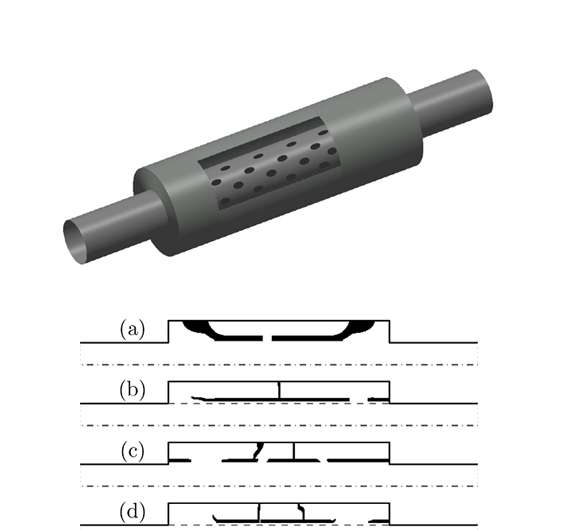Designing acoustic devices using thin materials

Acoustic devices like mufflers and loudspeakers are all around us. In the design of such devices, computer simulations and numerical optimisation algorithms are becoming increasingly useful in order to shorten the product development time and decrease the number of physical prototypes. Esubalewe Lakie Yedeg has in his research developed computer simulation approaches and applied them to the design of various acoustic devices.
"Computer simulations make it possible to design acoustic devices from scratch and to analyse and predict the performance of the final design. A simulation-based optimisation algorithm can determine proper values of tens of thousands of design variables, something that is impossible to accomplish by traditional manual design methods," says Esubalewe Lakie Yedeg.
A particular issue that Esubalewe Lakie Yedeg has studied in detail is how to model and optimise the distribution of very thin and elongated structures. In particular, Esubalewe developed computational techniques to design the interior layout of so-called reactive mufflers, which are standard components used to attenuate the exhaust noise of internal combustion engines. The interior of such mufflers often contains a complicated arrangement of thin and elongated structures; Esubalewe introduced a method that enabled better size control of the structural parts inside the muffler.
"The developed techniques enabled us to successfully optimise the interior of the muffler from scratch. The resulting design consists of a perforated pipe together with various combinations of expansion chambers and Helmholtz resonators, which were computed by the algorithm without specifying the layout of the chambers and resonators in advance," explains Esubalewe.
Another application was directed to the design of acoustic horns, which are a type of loudspeakers widely used in public address systems, particularly for outdoor use and in large halls. The objective here was to optimise the layout of thin material inside an existing horn to improve how the sound is distributed to the listeners.
"It is crucial that the optimization method really can operate with extremely thin material, since otherwise the sound will be blocked and destroy the function of the horn. This is the first demonstration of a technique that allows optimization of so extremely thin structures," says Esubalewe.
The possibility to use very thin structures in the optimisation of the acoustic horn was based on a computational method developed by Esubalewe and co-workers in the case where the acoustical properties of a thin surface is represented by an equivalent so-called surface transmission impedance. Previously developed computational methods cannot handle the crucial case when the impedance corresponds to a gradually disappearing surface, which however is a case that is important to be able to handle in the context of optimisation. As an extra bonus, the new method is also developed in order to be able to accurately capture so-called surface waves, which is an exotic kind of sound waves.
More information: The dissertation is online: umu.diva-portal.org/smash/record.jsf?pid=diva2%3A926016
Provided by Umea University




















